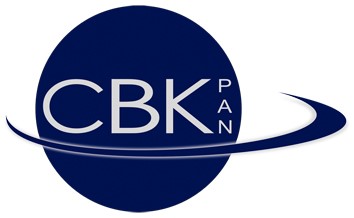
The empiric rule was deduced from Moore’s Law, stating that the complicated nature of integrated circuits (the number of transistors integrated into them) doubles approximately once per two years. (Source: Wikipedia).
Increased density in integrated circuits in the electronic industry goes hand in hand with the requirement of production environment cleanliness rate. Current „Clean Room“ classifications from ISO 10 to ISO 1 continue in low air pressure up to a vacuum.
The future indicates the inevitability of the vacuum environment for electronic parts production. The vacuum will be required also for nanotechnologies, precise laser welding, and for controlled melted technologies. Many new technologies require a contamination-free environment without humidity and oxidation process. Technologies can be made in space in order to eliminate the effect of gravitation on the production process. All these trends have generated the need for precise rotational movements that require maximum compactness and minimum weight, as well as two fundamental engineering challenges.
The first challenge is aimed at ensuring lubrication that eliminates volatile material, including most liquid substances. Most liquid substances of lubrication and lubricant cooling reach boiling point at very low pressure and subsequently disappear in the vacuum state, causing standard lubricant to degrade.
The second challenge refers to the effective regulation of inner heat accumulation. The vacuum is an excellent isolator; heat is released only in the form of radiation or thermal transfer of metal parts. Heat sources generated by efficiency – friction should be absorbed by the surrounding environment; otherwise, they would remain in the equipment. If they weren´t removed, reduction gear would be overheated, causing a sharp increase of friction as a result of expansion, which would finally result in rotational movement blockage.
How did the company SPINEA® manage these challenges?
SPINEA® company tested the reduction gear with special lubricant in the vacuum chamber located in the Space Research Center (CBK PAN) in Poland. Lubricant made by company Nye Lubricants, Inc., a US supplier to the Space industry dealing with the development and production of lubricants, was chosen for these special applications. The current product line, from NyeTorr 5200 through NyeTorr 6370EL, contains extremely low outgassing base oils and thickened with PTFE (Teflon) material composed of tiny solid particles suitable for temperature range from –60 °C to +250°. These lubricants create stable lubrication parameters in the vacuum environment. “The TwinGear system operating in a vacuum is a perfect match for our NyeTorr line of in-vacuum lubricants, for long wear life and maintaining precision accuracy, even in ultra-high vacuum (UHV)” said Bob Hoffman, regional engineering manager at Nye.
Company SPINEA® has developed a solution with testing equipment in a vacuum and with a group of thermal sensors in cooperation with company CBK and the Space Development Center in Poland. Particular temperatures in real-time, depending on the loading cycle, were measured on this equipment in a vacuum. The thermal simulation was prepared and compared to particular temperature increase parameters in particular metal components. 65°C surface temperature of reduction gear TwinSpin® represented a limiting factor. Particular loading cycles were generated in the vacuum chamber, and a comparison was done between the simulation and obtained results. Since the deviations between the simulation and testing were negligible, we can confirm that a vacuum is an environment in which high precision reduction gear TwinSpin® works just as reliably as in the atmosphere. The vacuum has no adverse effect on the positioning precision or on angular transmission error. In particular, successfully tested cycles in a vacuum were reduced by approx. 50% compared to standard cycles tested in the atmospheric conditions.
Most applications in the current industry don´t have dynamic loading for a vacuum. These include for example laser welding petitioners or SCARA robots for handling with, and installation of, electronic components. Hence, vacuum applications represent a huge challenge for company SPINEA® in the future. The company is technically capable of making reduction gear TwinSpin® also with other lubricants suitable for a vacuum or extra clean environment. Our company is able to perform thermal simulation of heat flow in the positioners or in robots, and this has predetermined us to become unique partners for the projects dealing with the development of equipment in the vacuum environment.
For questions related to lubrication in vacuum please contact www.nyelubricants.com
References:
The CBK PAN is developing manipulator arms working in a space environment. The mechanical heart of each manipulator is a joint with a gearbox. In this field, we cooperate with SPINEA® company to analyze the application of cycloidal gearbox to space manipulator joints. The cooperation was successful, we had prepared a common presentation for Final Mechanisms Presentation Days in ESTEC (ESA) and we hope for future common activities.
Karol Seweryn, DSc, PhD., Eng
Associate Professor
Space Mechatronics and Robotics Laboratory
Space Research Centre, Polish Academy of Sciences (CBK PAN)
https://www.cbk.waw.pl/


 SK
SK DE
DE IT
IT RU
RU CN
CN




































